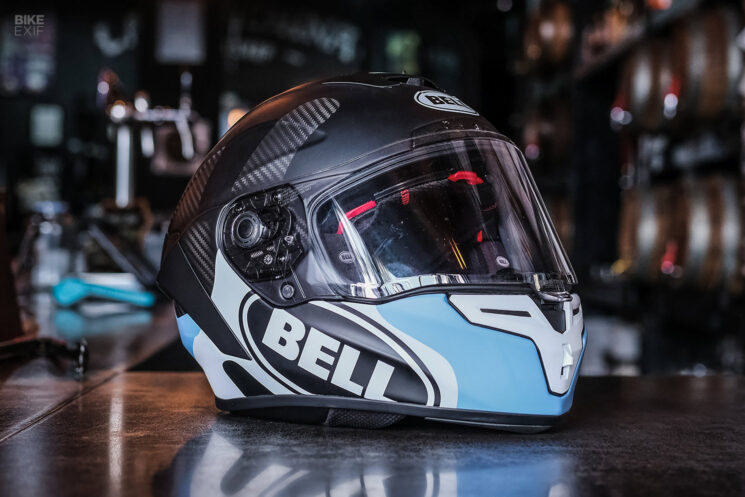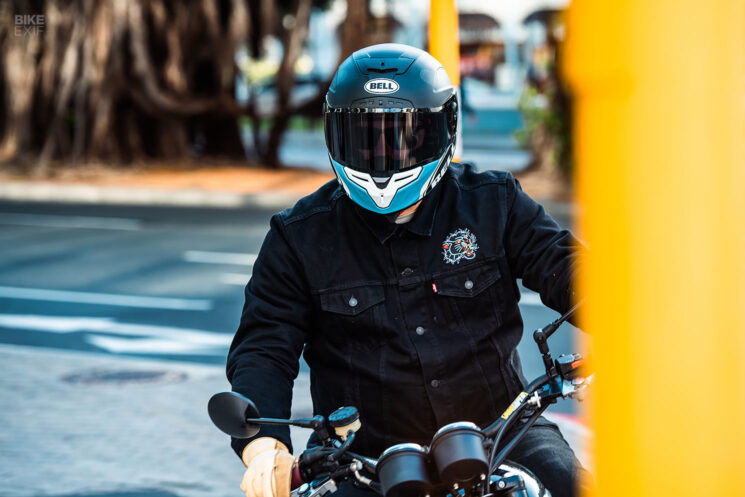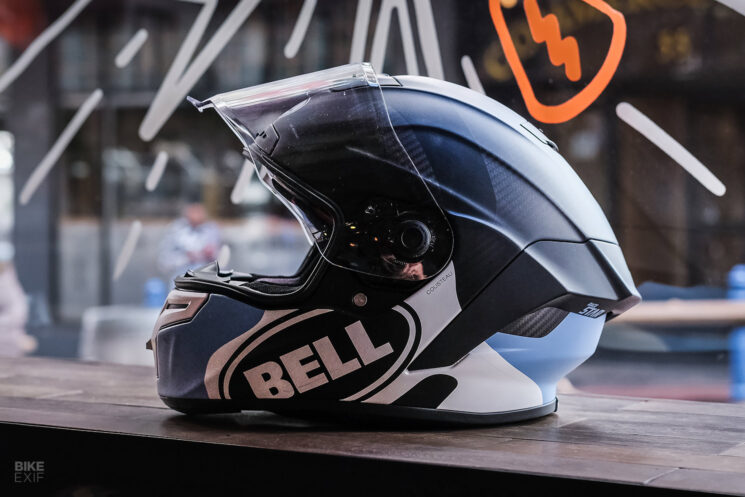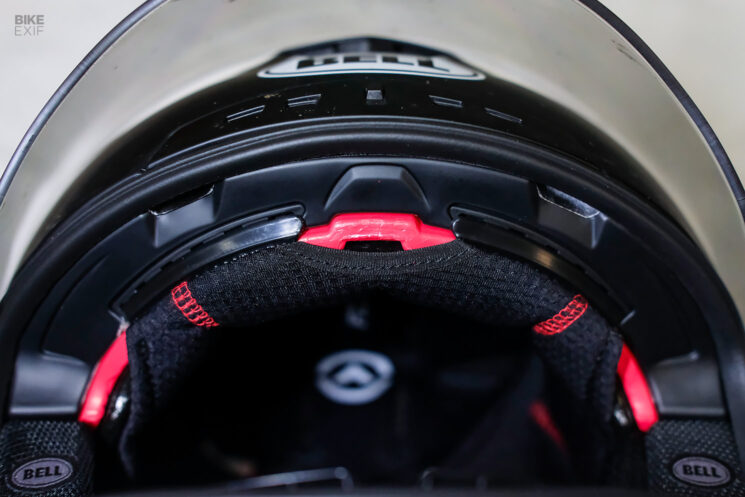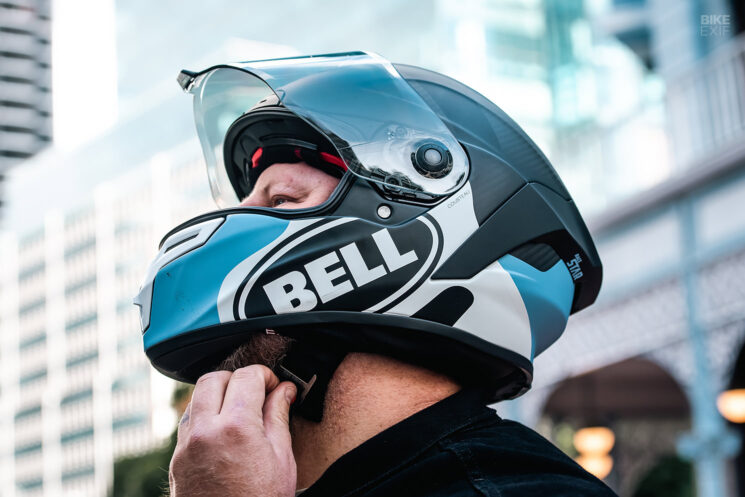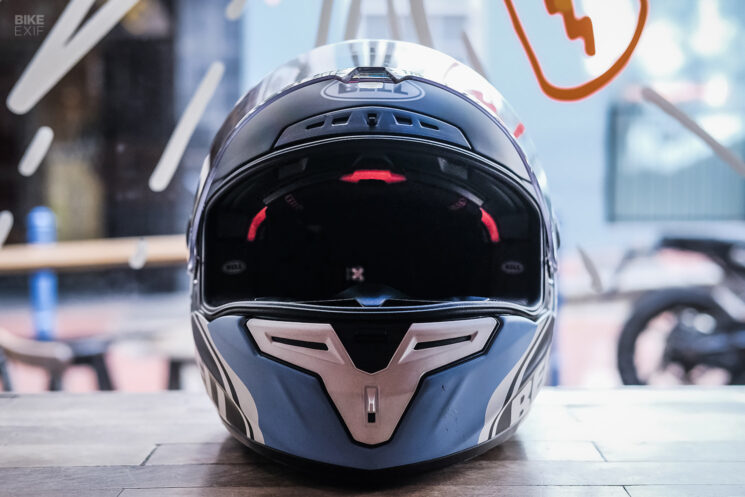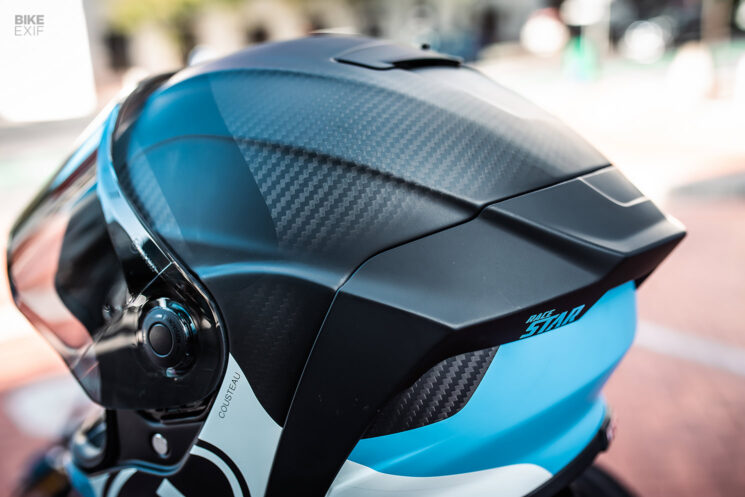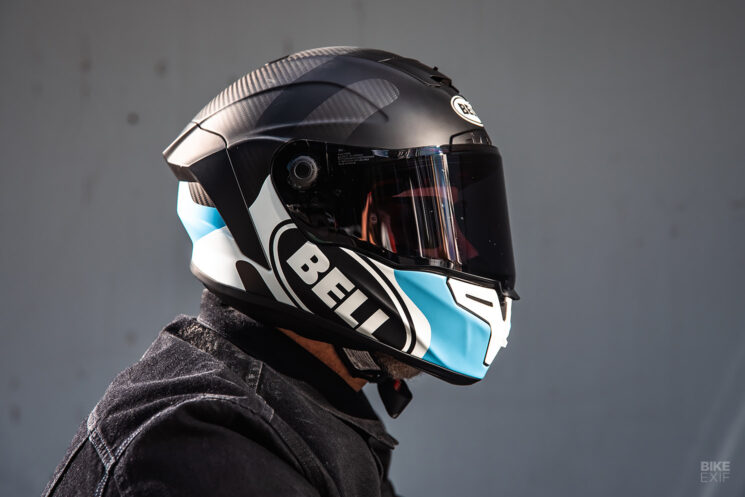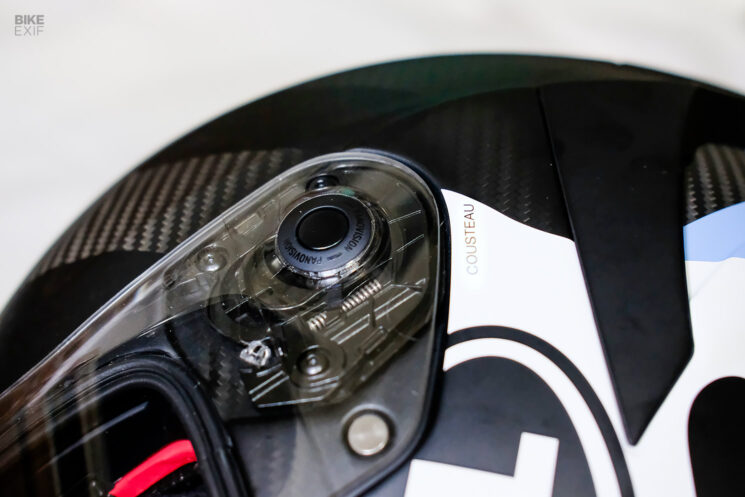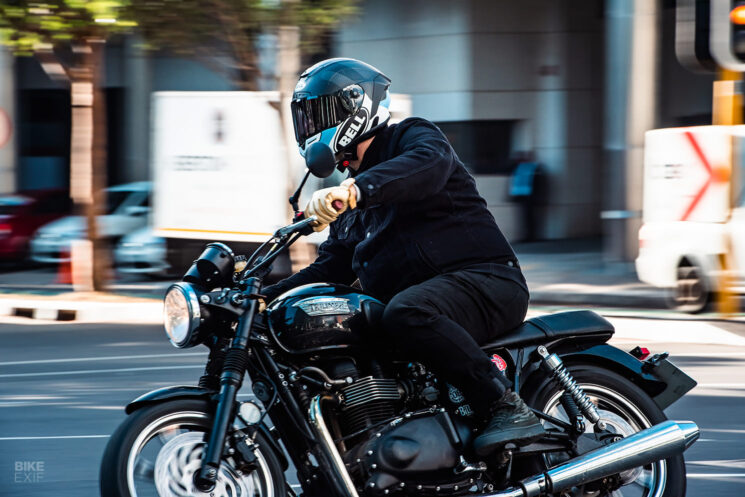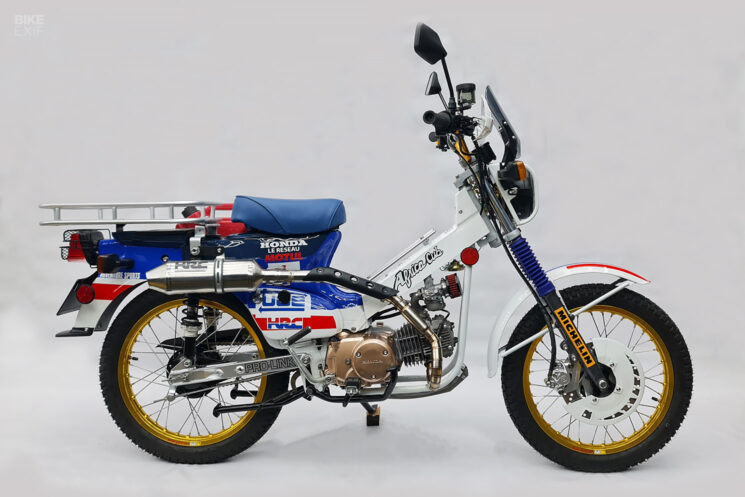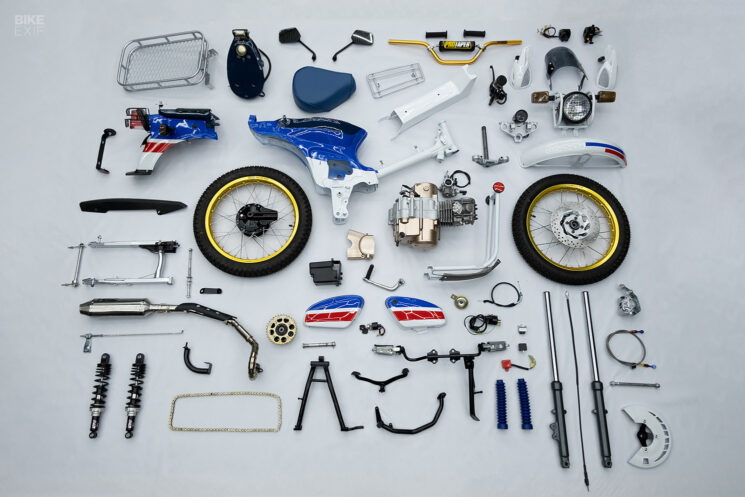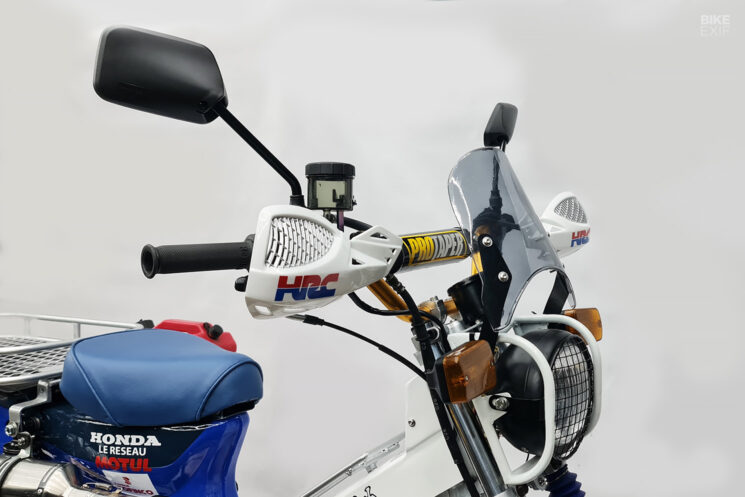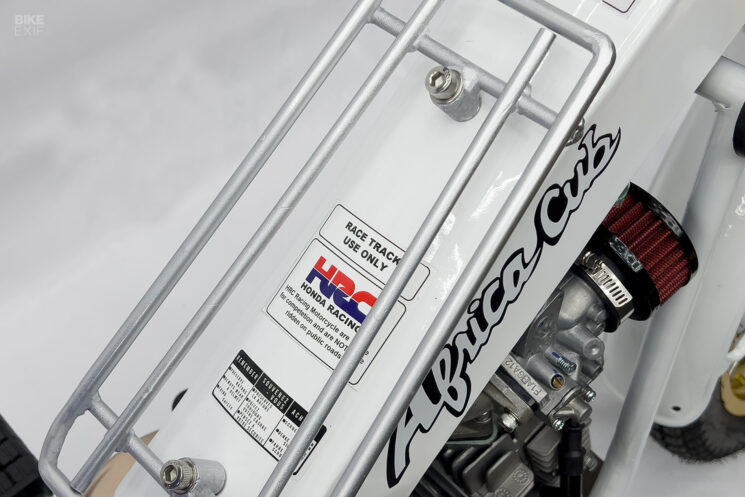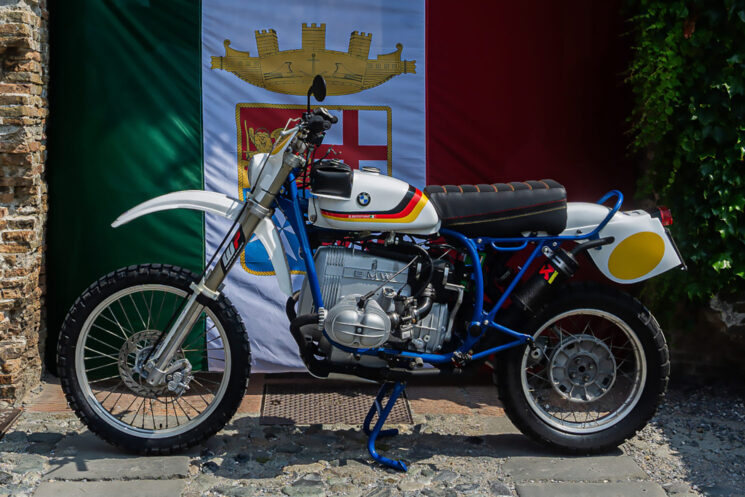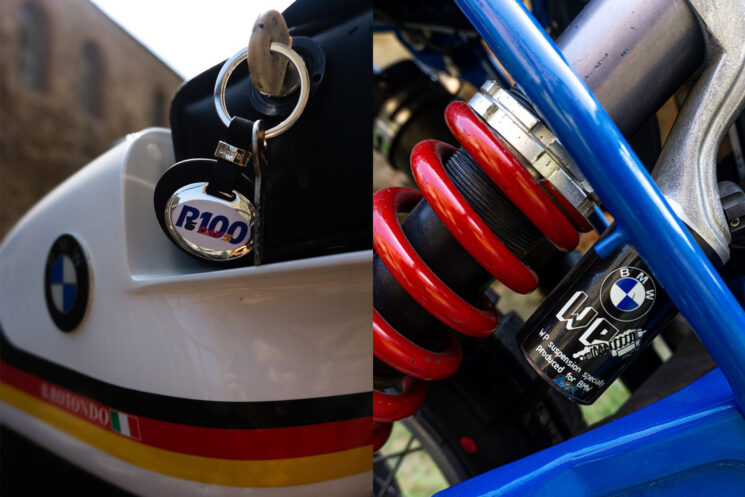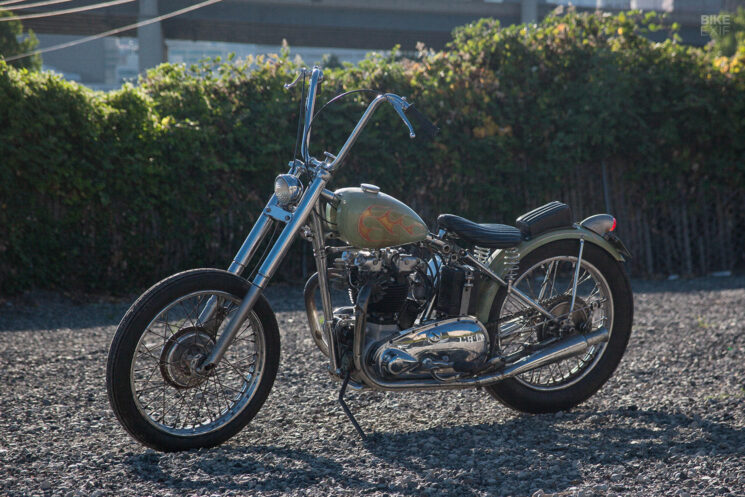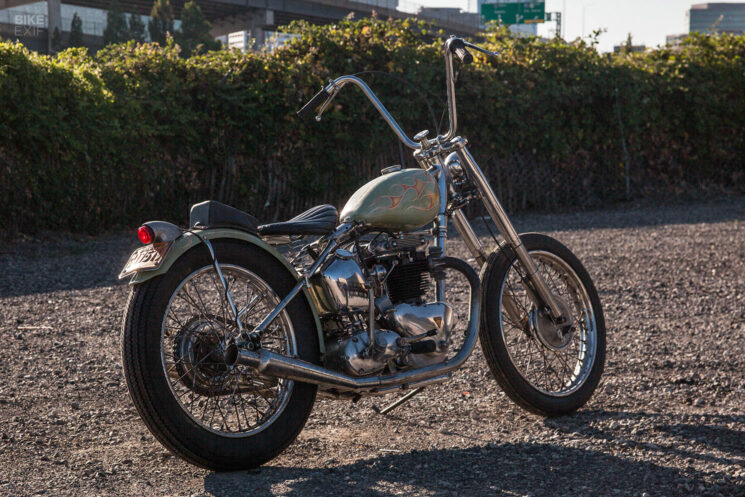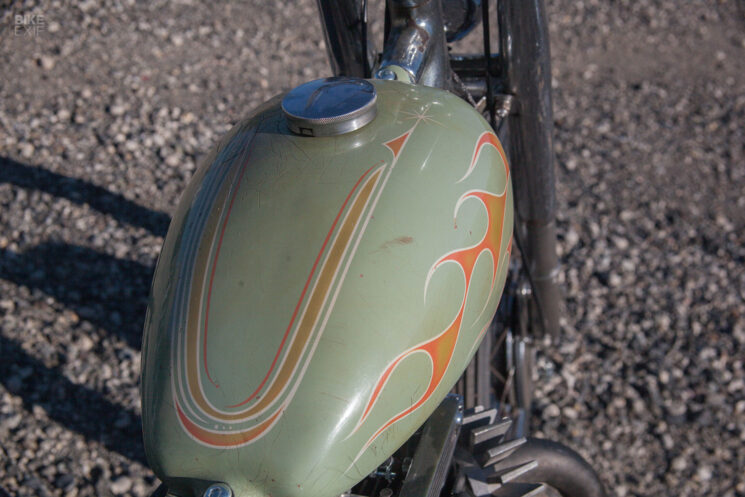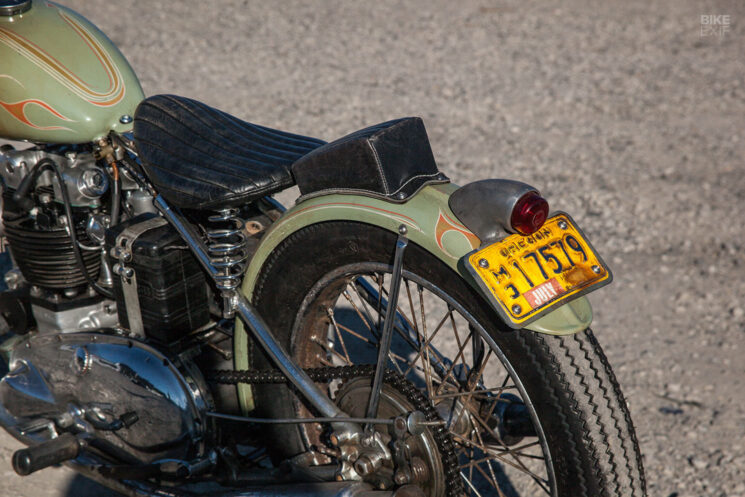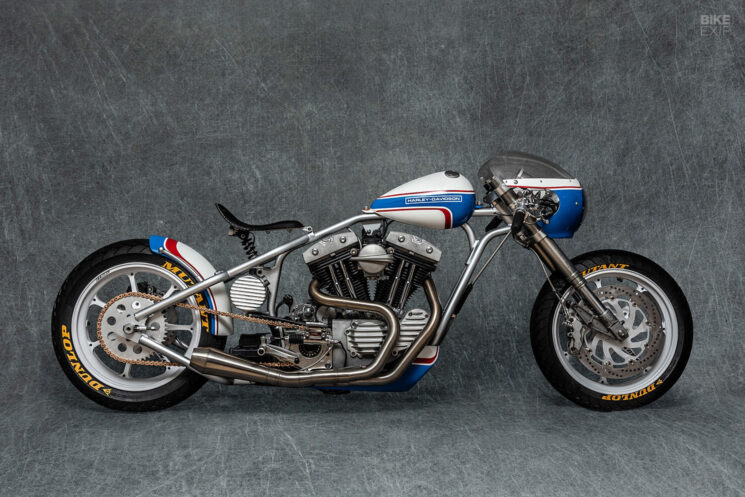
The brutal minimalism of land-speed bikes is downright magnetic. So it doesn’t surprise us that that’s where Corban Gallagher found inspiration for his latest custom build. Correction: his first custom build.
It’s true—while Corban has dabbled with modifying motorcycles and cars in the past, this is the first time he’s pieced together a whole custom motorcycle. And what a debut effort it is. Powered by an S1 White Lightning engine, this low and lean Buell hardtail dragster is pixel-perfect.

“I’m a nuclear chemist,” Corban explains, “and spend about 70 to 80 hours a week in my shop, building nuclear devices for everything from oil and space exploration to military and various research uses. I have a lot of downtime in between certain lab processes, so I take on different things to keep me busy during that time—like learning guitar or building air cannons.”
“A friend of mine turned me on to the Handbuilt Show, and I made it my goal to build a bike in nine months for this year’s event. So I bought a bike lift and parked next to my desk, and would work on it any free moment I had.”
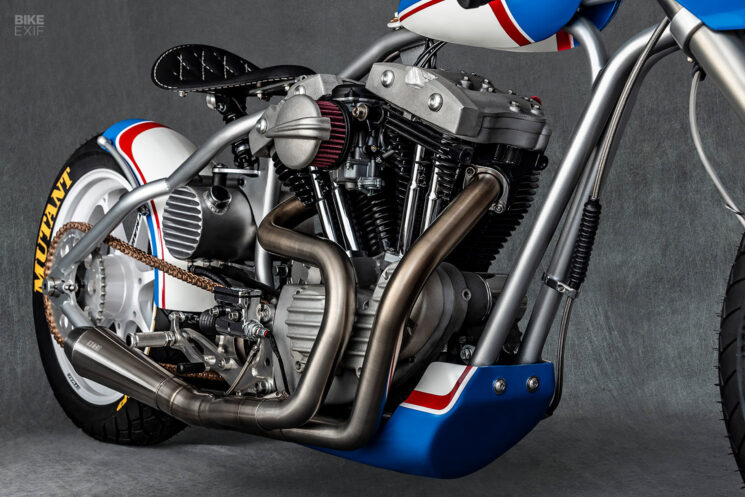
The donor bike for Corban’s ambitious project was a 1998 Buell S1 White Lightning—but all that remains of the classic Buell are its front forks and Sportster-derived engine. Corban scrapped the rest, then went on the hunt for a fabricator that could produce a rigid frame in the style he was after.
“I’ve always been fascinated by the photo of Rollie Free setting the land speed record on his Vincent,” says Corban. “I wanted to create a low, long bike that mimicked the lines of those old salt flat racers. Big Al at Bitter End Choppers really came through with the perfect frame for the line I was looking for.”
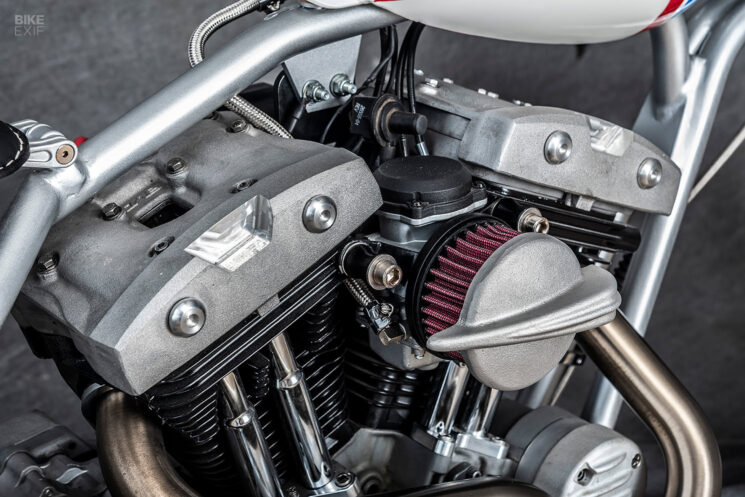
The Buell S1 White Lightning was originally a hopped-up version of the S1 Lightning. Corban managed to get his hands on one with Buell’s ‘Thunderstorm’ spec; an engine package with upgraded heads, a better cam, a lighter flywheel, and higher compression pistons. Advertised numbers back in 1998 were 101 hp and 129 Nm of torque.
The engine was a decent runner, despite looking “like it just got dragged out of a swamp.” Corban rebuilt the heads, replaced the worn-out clutch, and installed a DynaTek 2000i programmable ignition. Other upgrades include a fresh CV40 carb, a TC Bros air cleaner, and a two-into-one stainless steel exhaust system from Cone Engineering.
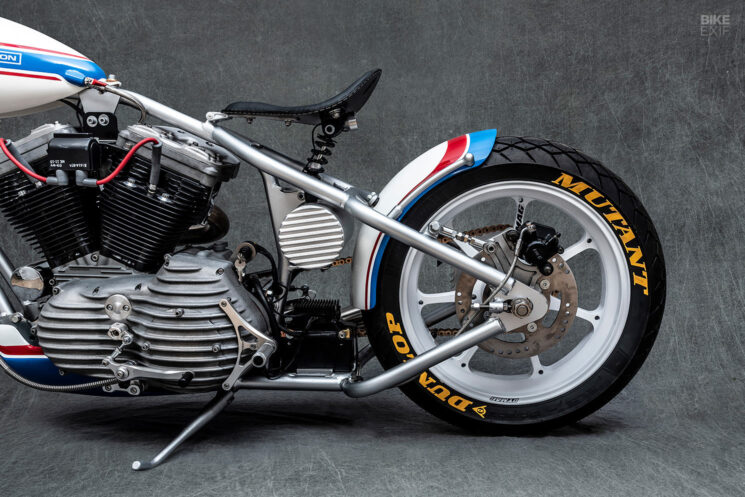
Corban repainted the motor too, then dressed it with finned covers from EMD in France. The finned theme continues further back, where a matching oil tank from Lowbrow Customs is tucked neatly into the frame’s rear triangle. Perched just above it is a stylish leather seat from Alex Leathercraft in Germany.
It’s a tidy setup, but there’s a lot going on. The seat sits on a small shock, which attaches to a bracket that Corban designed to interface perfectly with the oil tank. The seat’s upper bracket is his handiwork too, and features an integrated mount for the bike’s discreet LED taillight.
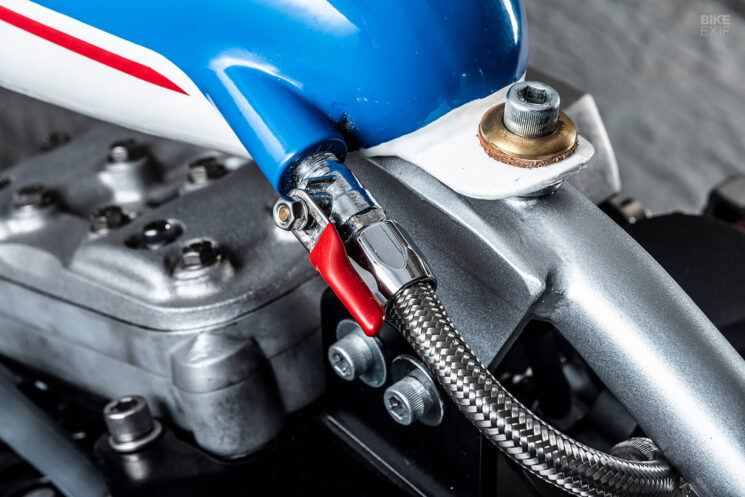
Getting the bodywork right proved to be a tedious process. Corban started by ordering a custom-made aluminum fairing from Omega Racer in Thailand. But by the time it had arrived, he’d changed his mind about the direction he wanted to take the design in.
“I impulse buy vintage and new gas tanks,” he explains, “so I tried out maybe 10 different tanks to get the line I wanted. Ultimately, I landed on a 1.6-gallon gas tank from Lowbrow Customs. But once I decided on the fuel tank, the Omega Racer fairing didn’t flow correctly.”
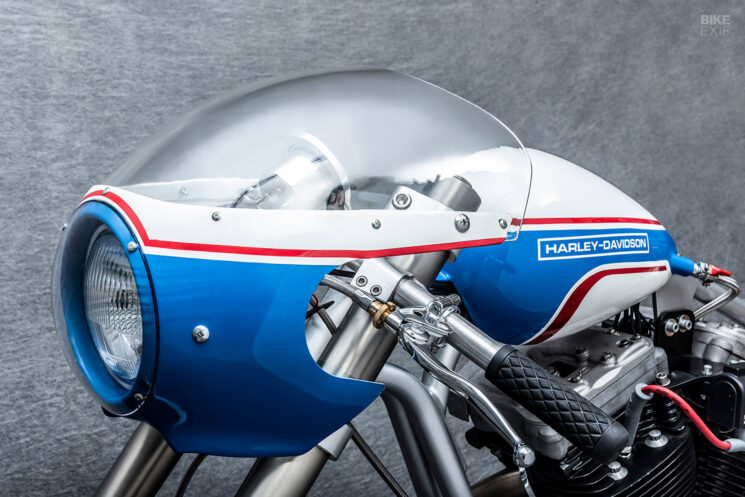
In the end, Corban ended up shelving the Omega part and ordering a cheap plastic nose fairing off eBay. Corban trimmed it down until it looked right, then retrofitted the headlight that had come with the Omega fairing. Everything’s bolted to custom-made brackets, with the primary fairing stay’s attachment point doubling up as a mounting point for the new speedo bracket.
Tucked behind the fairing are clip-ons that Corban built by turning down some round aluminum stock and matching it to generic aftermarket clamps. The vintage-style controls are Moto Iron parts, and the grips come from Biltwell Inc. Take a closer look at the foot controls, and you’ll spot some Sato Racing components too.
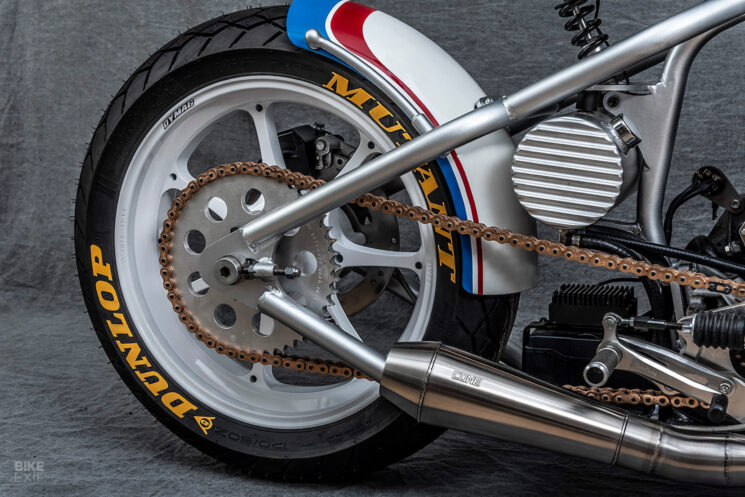
At the opposite end of Corban’s Buell hardtail sits a repurposed Honda Shadow fender, mounted on handmade struts with invisible fasteners. The Buell forks and brakes made the cut, albeit with custom rotors and pads. The wheels are brand spanking new.
“I did splurge for a set of Dymag MotoGP wheels,” Corban admits. “Whatever else I needed, I would fabricate myself. I try my best to repurpose as much as I can—for example, I found that many of the capsules I normally use to encapsulate radioactive material make for great spacers and various brackets, which saved me a lot of added machining.”
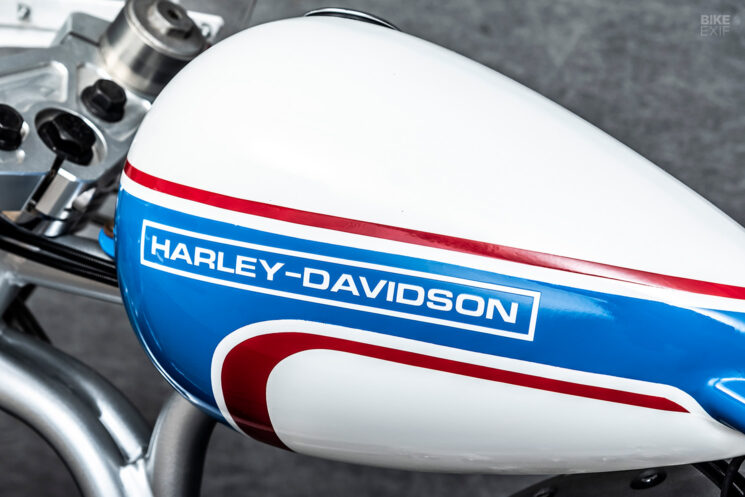
“This was also my first time painting a bike and I had to do it in an active machine shop, so it was challenging to keep the paint free of airborne debris. I was shooting for the ‘AMF Harley years’ look, with a bit of old school Montreal Expos thrown in.”
The bad news is that Corban doesn’t know quite how fast his Buell hardtail is. Since he finished it just in time for the show and didn’t want to risk damaging it, the initial shakedown was gentle. But the good news is that now that Corban has popped his custom bike build cherry, he’s already busy with the next project.
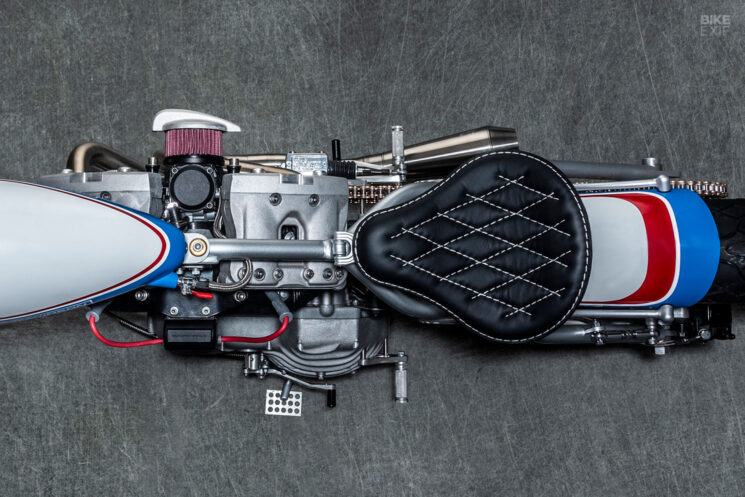
“I was so stoked from this, that I started a new build for next year’s Handbuilt Show the minute I got home. The show is held in Austin at the same time the MotoGP is being run at the Circuit of the Americas, so I want to build something that was in the spirit of both events. It’s a poor man’s GP bike, with a 1997 Sportster frame, a 1996 motor that I’ve rebuilt with tons of mods, a custom mono-shock swingarm with hacked-up suspension parts from a Ducati SS, Buell XB wheels and forks, a 1950s style Norton Manx tank, and full race fairings from a 1970s Triumph Trident.”
Yes, we’ve seen a teaser. And yes, it’s as wild as it sounds.
Corban Gallagher Instagram | Images by, and with special thanks to, Myke Toman
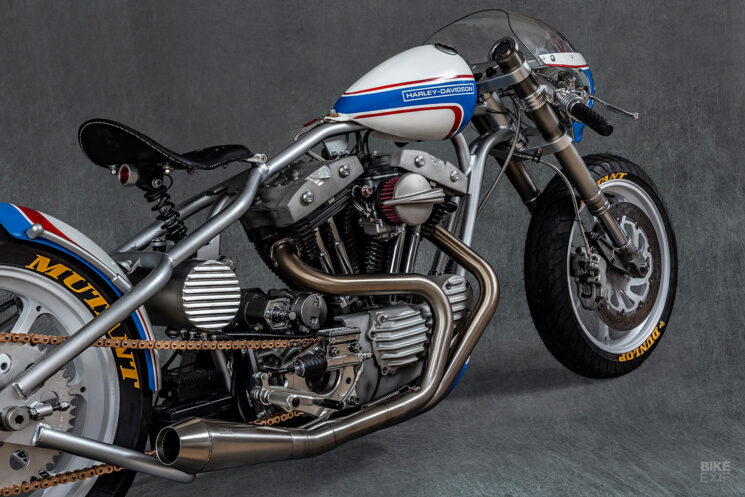
from Bike EXIF https://ift.tt/mogjvWD

